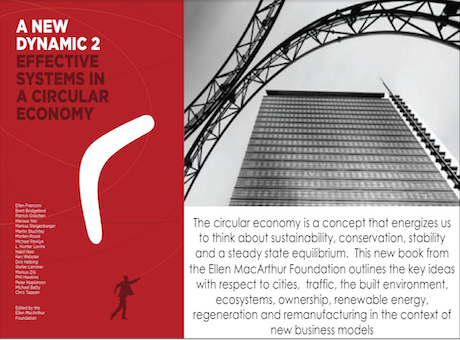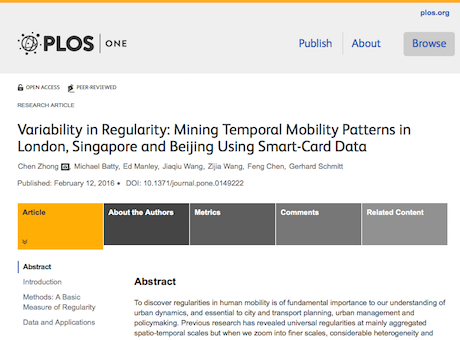The new book from the Ellen MacArthur Foundation contains a series of articles on cities and the built environment that relates to renewability and regeneration in terms of energy, information and new ways of conserving both physical and human resources. I have a chapter here on cities where I examine how we might think about circularity of resources use within the city arguing that we need to generate a renewable infrastructure with respect to how we move between places in the city. To break the non renewable cycle generating ever more urban growth we need to generate a balanced city structure in which our movement patterns are supported and sustained by resources that are self-generated. This probably means a shift from non renewable fuels but ti does not necessarily mean the end of urban growth for it the system is sustainable, then cities can begin to grow in a balanced way. Besides changing our use of energy we may substitute it with information and that probably means autonomous vehicles that use much less energy (but still some) but focus on how best to move using information as a key resource. Anyway what I walk about is rather speculative but it is all part of our new concern for the fact that new urban forms will emerge as we move towards a circylkar economy, with the age-old link between form and functions – which is breaking anyway in the information age – becoming significant in very different ways from the past.
There are lost of other interesting articles in this book and let me list them
- Circular business opportunities for the built environment—Ellen Franconi, Brett Bridgeland
- The renewable energy transition—Insights from Germany’s Energiewende-Patrick Graichen and Markus Steigenberger
- Towards a regenerative food system — Martin Stuchtey and Morten Rossé
- Ecosystems as a unifying model for cities and industry— Michael Pawlyn
- The circular economy of soil— L. Hunter Lovins
- Remanufacturing and the circular economy—Nabil Nasr
- Selling access over ownership—Ken Webster
- Broader lessons from self-organising traffic lights in city transport systems— Dirk Helbing and Stefan Lämmer
- Challenges and capabilities for scaling up circular economy business models—a change management perspective— Markus Zils, Phil Hawkins and Peter Hopkinson
- Cities as flows in a circular economy— Michael Batty
- Circularity indicators— Chris Tuppen











